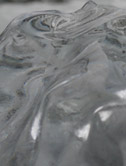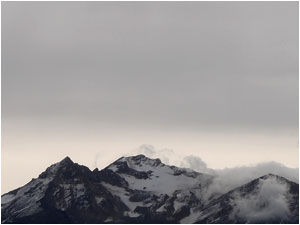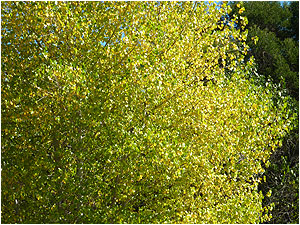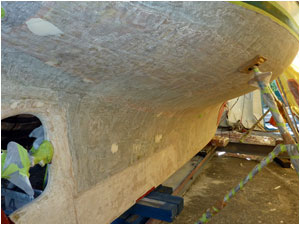
 |

|
| |

|
|
 |
Day 1,065 - Stewart Island, NZ
09:34hrs - April 30th 2010
What Are The Odds? |

Stewart Island, apparently, boasts more wild kiwi birds than human inhabitants. Which sounds rather impressive, like you could almost imagine plague like proportions - kiwis stampeding through the bush, wandering the village in hordes, taunting residents, gathering in droves on the beaches. With those odds we thought there'd be so many we'd literally be tripping over them, or at the very least finally get a photo of one of the illusive national mascots, after-all, that's why we came all the way down here. But when you consider Stewart Island is New Zealand's third largest island (about 40 miles long and 25 miles wide) and is home to a mere 350 or so intrepid permanent residents, the odds of actually spotting a wild kiwi here are not quite as good as we had originally thought.
We've been on Stewart Island now, which sits off the very southern tip of the South Island, for three days and the only kiwis we've seen so far are the ones printed on road signs. Not through lack of effort I'd like to add, we've looked everywhere. We've wandered deserted beaches at dusk, driven ourselves into the bush in a Toyota diesel 4-Runner on a sort of kiwi-safari, and we've even tramped along the wild northwestern trail to Maori Beach, but so far the Stewart Island kiwi population continues to elude us.
As a last resort we had planned to hire a professional kiwi guide to take us on a boat over to The Neck, a stretch of land on the southern entrance of Paterson's Inlet where, according to the i-SITE tourist office, would give us a 95% chance of spotting one - odds we can finally work with. But unfortunately a northwesterly blew in making a beach landing too dangerous, and the skies opened up to dump more rain in the area than they've had in these parts for over a decade. And as we're leaving Stewart Island tomorrow morning to head up to Fiordland, I suspect, unfortunately, that the only kiwis we're going to see on this trip will be behind plate glass in a museum.
|
|

| |
 |
| |
View more of our photos
in the Gallery > |
|
|


|
|
 |
Day 1,059 - Franz Joseph, NZ
08:30hrs - April 24th 2010
The Great Outdoors |

For the last ten days we've been exploring the South Island of New Zealand, and we've barely managed
to cover just a portion of its western coastline. It's not that the distances between sights in Westland are particularly remote, most towns or attractions are easily within a days drive away, no its taking so long because we can't seem to drive more than a few hundred yards before feeling compelled to pull over to the side of the road again to stare in awe-inspired silence at scenery so impressive, it literally makes
you forget to breathe.
Unlike the relatively groomed, orderly and populated North Island, the western coastline of the South Island is wild, abandoned and untamed. State Highway 6, the only road that winds its way along the shoreline, is rated among the most scenic coastal roads in the world. And it is spectacular. Carving its way over the Southern Alps, past snowcapped ridges, over raging, crystal clear mountain rivers, through lush rain forests and along the rugged coastline with uninterrupted views across the Tasman Sea where, driven by the roaring forties, rain and surf crash into the coastline - driving has never felt so adventurous. We've been filling up our camera's SD cards faster than we can download the photos. It seems that around every corner is a stretch of coastline, a cascading waterfall or a mountainous backdrop even
more impressive than the last.
We're currently in glacier country and have been exploring the impressive Franz Josef and Fox glaciers - ice flows that have been creaking, groaning and sliding their way down the valley for the last 20,000 year old, advancing at an impressive 1.5 meters a day, which apparently, according to some local glacier geeks, is really, really fast (well, at least when compared to other glaciers). Put it this way, if there was
a race between Kiwi glaciers and say, Swiss glaciers, these guys here would be way ahead of the pack.
We had grand plans to take a helihike today - an exciting helicopter ride which would take us over the mountains and drop us off high up on the glacier where we could explore virgin blue-ice caves, crevices and pristine ice formations, but unfortunately it's been raining today, so we may have to postpone our helihike for our return journey back up the coast.
Next stop on Highway 6 will be Queenstown, which from what I understand is a haven for bungy jumping, sky diving, whitewater rafting, jet boating, river surfing, paragliding, mountain biking and anything remotely dangerous adrenaline junkies.
We've yet to decide exactly which death defying, adventure-filled activity we'll select, but one things for sure, it'll be totally irrational, probably terrifying and all caught on tape. |


|
|
 |
Day 1,044 - Gulf Harbour, NZ (S 36° 06 E 175° 25)
14:29hrs - April 9th 2010
Changing Seasons |

It’s starting to get cooler now here in New Zealand, and the leaves are changing color from their summery greens, to autumn reds and golds. With the end of the Pacific cyclone season so close now, our sailing friends are all making their final preparations, getting ready to leave New Zealand for the next season of Pacific cruising, going north, closer to the equator and to warmer tropical climes. We would have been doing the same thing, but our boat repairs are still in full swing and will keep us planted here a while longer. We hope to be back in the water and making our own preparations for Fiji by the beginning of June, but until then we have to wait, and we’ll explore here some more till Dream Time is ready to go.
Our sailing life and the sea feels so very far away at the moment. Living in this little flat watching wayward golf balls land in the garden from the golf course just over the fence, and waiting for our little boat to recover. We have been on land so long now that I’m starting to feel something I haven’t felt before, the pull of the sea. It’s odd, it’s like a physical draw or a call. It’s making me remember the feeling of being miles and weeks away from land when the days melt into each other and nothing matters except what is happening right at that moment, and I am looking forward to being there again. I’m looking forward to wide open oceans with little islands that appear in the distance promising new experiences. And I can’t wait to be there again.
In the meantime we are (yes, I know we’ve been saying this for a while, but we really really are this time!!) going south to explore the wild, woolly and beautiful South Island. Our goal apparently is to meet a real live Kiwi bird in its natural habitat. They are quite tricky to find, but we’ll keep you posted!
|


|
|
 |
Day 1,038 - Gulf Harbour, NZ (S 36° 06 E 175° 25)
09:38hrs - April 3rd 2010
Project Osmosis - Part 3 |

Welcome to the third installment of our osmosis diagnosis series.
Three weeks ago, when we hauled Dream Time out of the water for a routine clean and bottom paint, we discovered blisters on the hull under the waterline - caused by saltwater penetrating the protective layer of epoxy and soaking into the fiberglass.
In Part Two we shaved 3mm off the hull, or approximately 3-layers of fiberglass, the area where the majority of the moisture was trapped. This week, with Dream Time's hull exposed, she's been able to focus on one of the most important steps of the osmosis solution - drying out.
For 10 days the needle on the moisture meter has been steadily dropping, and with a little help from the hot vac hull cure system - portable blankets that are sealed to the hull, heated to almost 200 degrees fahrenheit, and literally suck any remaining moisture out from the hull, we're happy to report that the majority of areas are now dry.
We'll continue drying the hull for another week, or until we're absolutely certain that all moisture has been removed, and then we'll be ready for part 4 - laying on nice new sheets of fiberglass to replace what was removed.
It will be another 8-weeks before Dream Time is ready to launch, but the completion of our project work should coincide nicely with the end of the South Pacific cyclone season - the perfect time for us to
make our passage north, back up to the tropics where we plan to spend the entire season, five months, exploring the "soft coral capital of the world" - over 300 islands which cover a vast area of 1.3 million
sq km - Fiji!
But we have another cruise planned before then. Next week (this time we're really going - honestly) we'll pack our oilies, thermals and climbing boots, and will head south to explore the chilly snowcapped mountains of the Southern Alps, soak in the beauty of Fjordland, marvel at century-old ice flows, and,
if we're really lucky, get a glimpse of a wild kiwi (the bird variety) on the remote Stewart Island.
Click here to learn more about Osmosis Solutions Ltd. > |

|
|








![]()